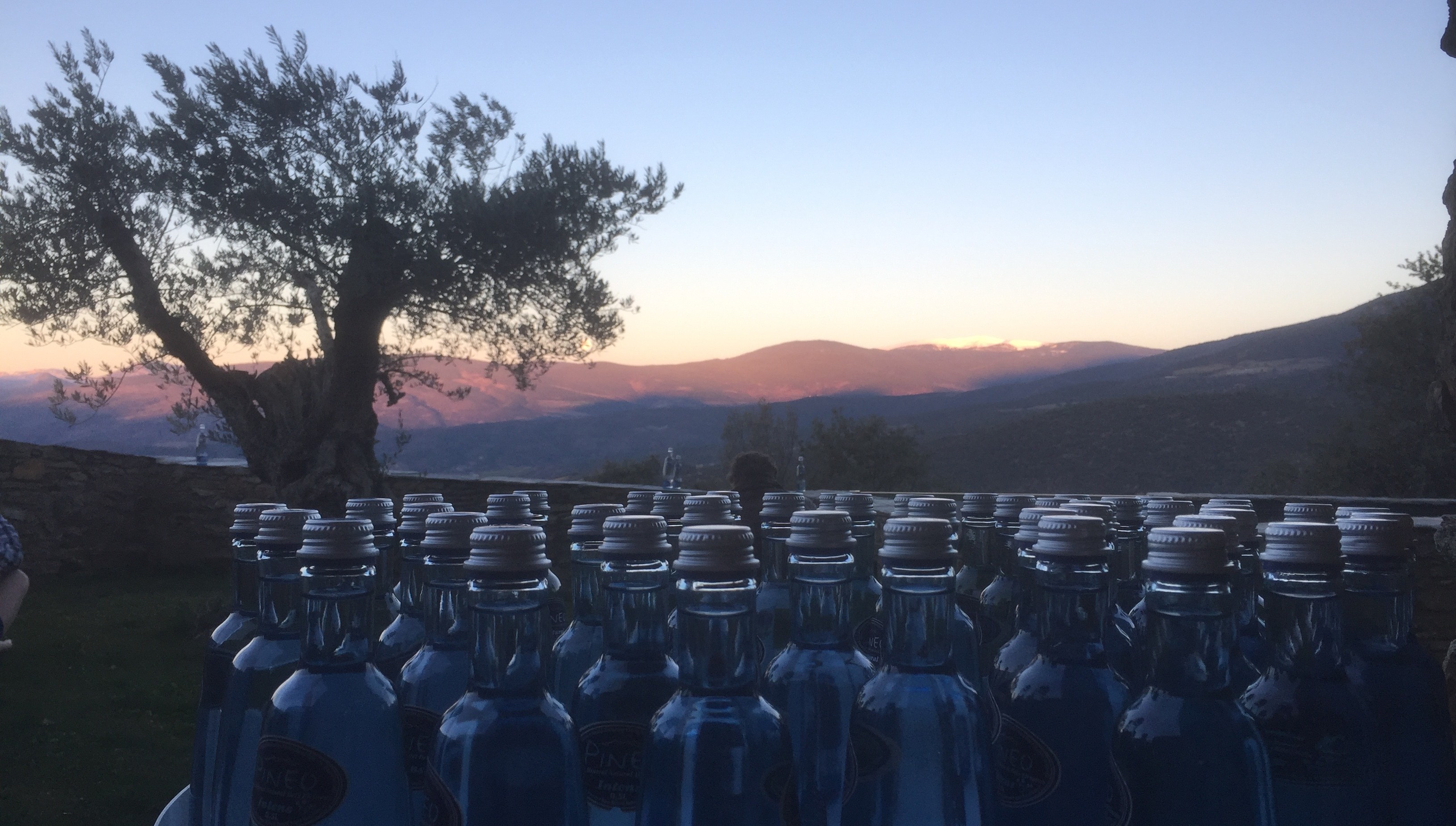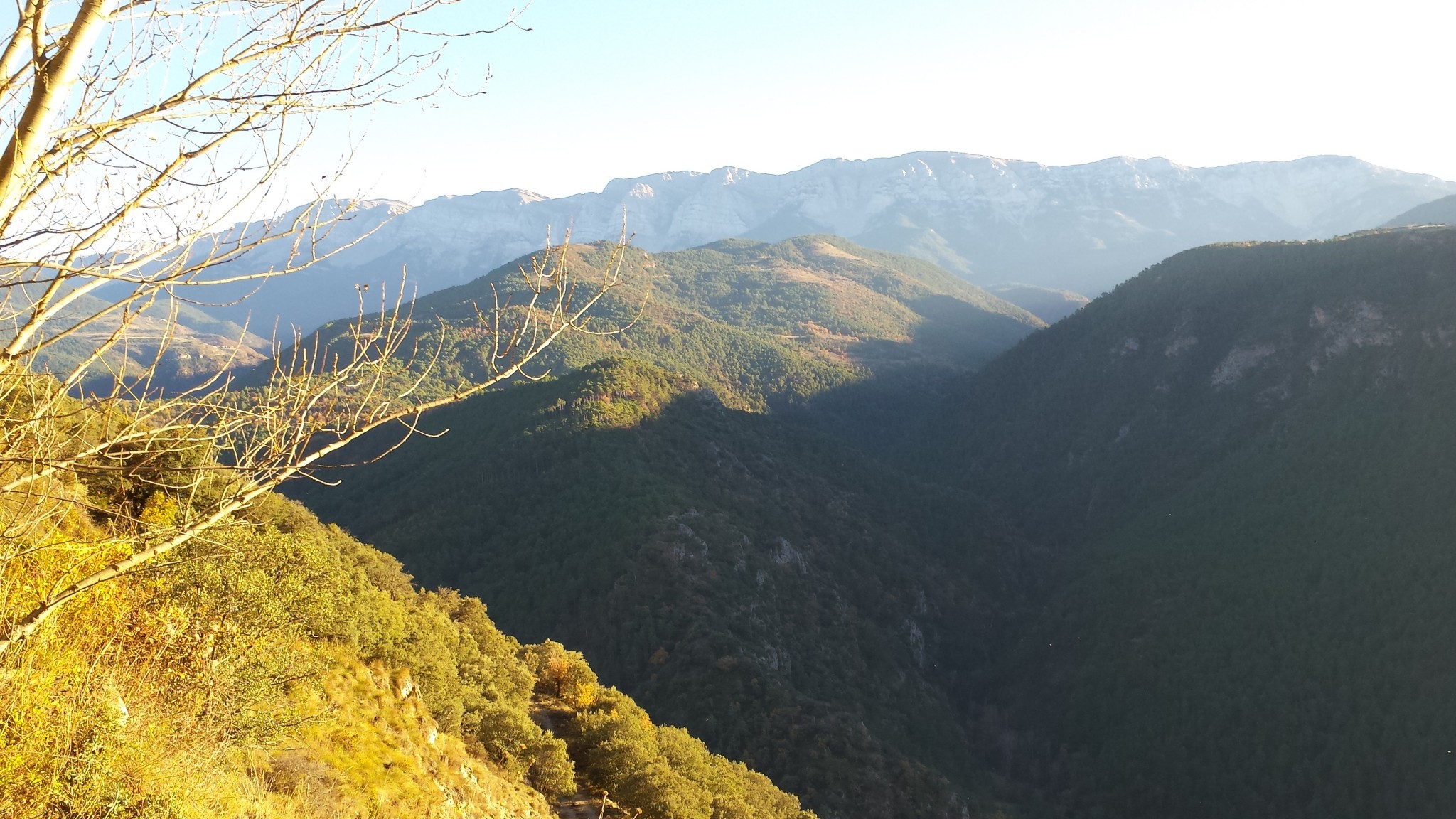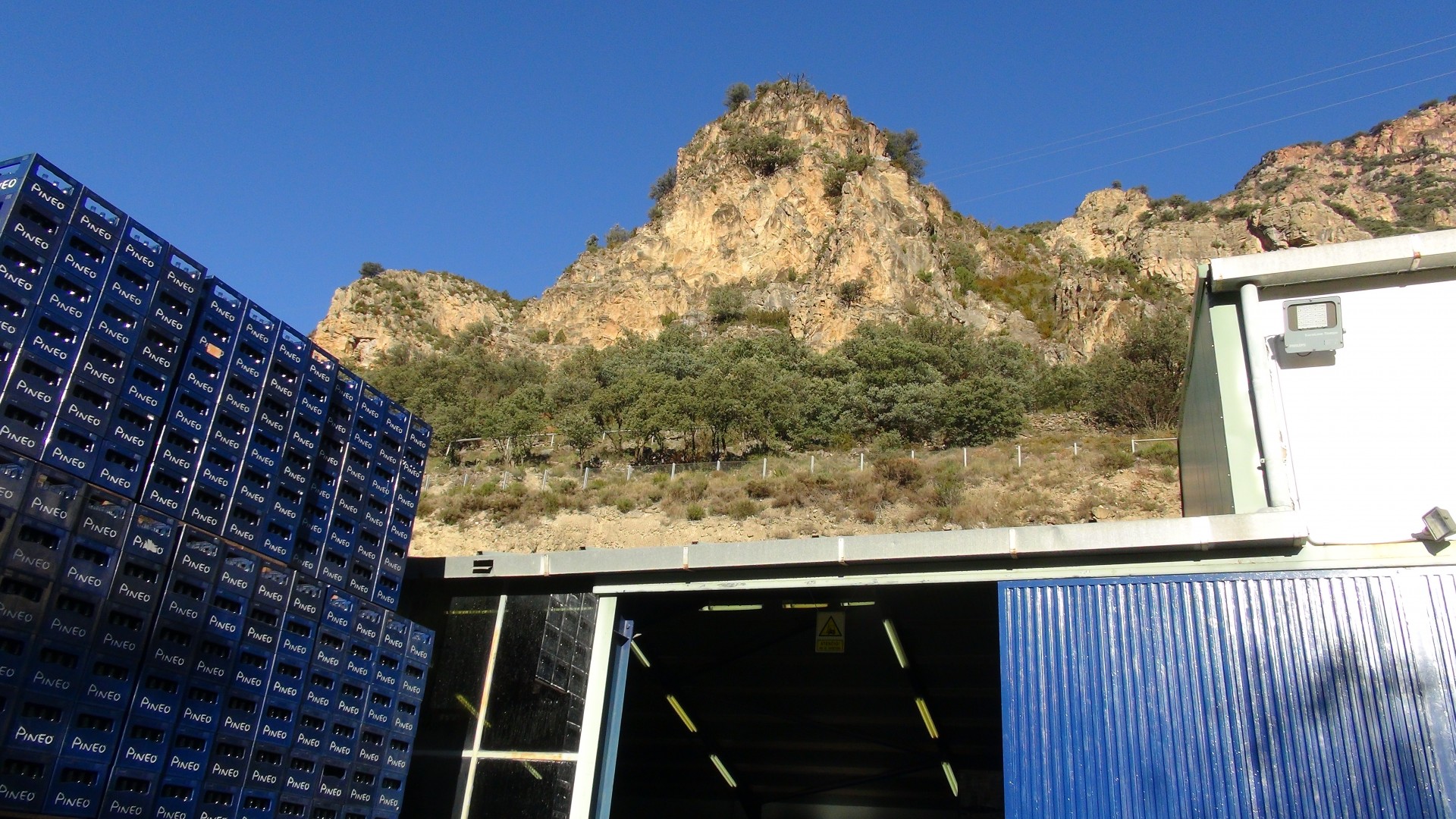The origins of Pineo: special water for a reason
Pineo comes from Estamariu in the Spanish Pyrenees
The sources of Pineo were discovered in 852 AD, with a nearby monastic ruin bearing witness to the event. The sources arise in the untouched environment of the Spanish Pyrenees, close to Andorra, and protected by a nest of trencalos (bearded vultures).
The holy mountain stretches from 1,000 to 1,500 meters in altitude, far above the industrial limit and surround by protected nature reserves. The bottling plant is located a t a height of 550 meters.
The village of Estamariu is located approximately 10-15 kilometres from the sources of Pineo, on another mountain. Estamariu only had 120 inhabitants in 2015.
Water. Purely natural. Served from the source.
Pineo water comes from deep inside the Benedio mountain, a holy mountain that stands at 1,500 meters in the municipality of Estamariu.
The average capacity of the Pineo sources is 25,000 litres an hour – never pumped, just naturally arising. The water we do not bottle eventually flows into the 261 km long El Segre river.
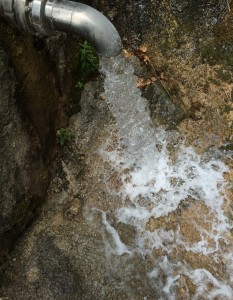

Monastir Sant Vicenç de Pinsent
Locations where artesian water surfaces have traditionally been labelled as holy places, and they are often the sites of shrines, baths and pilgrimages. And that is also the case for the ‘holy’ mountain where the Pineo sources are located. The ruins of Monastir Sant Vicenç de Pinsent are a mere 100 meters from the sources, protected by overhanging rocks. A monastir is a monastery in Catalonian.
Some historical sources refer to Sant Andreu de la Quera. La Quera can mean ‘the drought’ in Catalonian. There are geological maps also refer to La Quera sources, which were renamed the Pineo sources when the Pineo natural mineral water was registered.
The small monastery dates to 852 AD, with its church restored in 967 by the Bishop of Urgell, Guisad II. The monastery was a Roman abbey, and only its ruins remain as a memory, a history.
The nature reserve surrounding Pineo
Many well-known mineral water brands have discovered a source and turned their production into an industry. But Pineo aims to keep its production small-scale, as a sign of respect for its natural surroundings. The Pineo source can be found in the middle of an unspoilt nature reserve in the Spanish Pyrenees. It arises at an altitude of 1,100 meters and is immediately bottled on location. There is no industrial activity within a radius of 15 to 20 km, as it is a protected natural reserve. The reserve is even home to the rare bearded vulture.


The nest of the trencalos, the Catalonian bearded vulture, near the Pineo source
A nest of the trencalos, the Catalonian bearded vulture that is part of the hawk family, can be found very close to the Pineo source. The bearded vulture is on the IUCN red list, with a global population of just 4,000.
The bearded vulture can be found in a rock cleft. Among American Indians this red hawk symbolised a messenger, protector, a sentinel, awakening and purifying. And it has exactly the same symbolic role at Pineo.
The bearded vulture spends its entire life close to its nest, at altitudes of between 300 and 4,500 meters. At Pineo it nested at 1,300 meters, 200 meters above our source. With a wingspan of 2.5 meters and a bronze-coloured body, the trencalos is a beautiful sight, an impressive phenomenon. Its colour comes from the iron-rich red earth.
The artesian Pineo source
Water arises spontaneously from the Pineo sources, pushed upwards by hydraulic pressure in an underground reservoir. The ground consists of a range of aquifers, which are water-permeable layers that are cut off by non-permeable layers. This allows water from closer to the surface to pressurise water that is lower down, pushing it up to the earth’s surface. The water surfaces spontaneously, and is known as a natural artesian well.
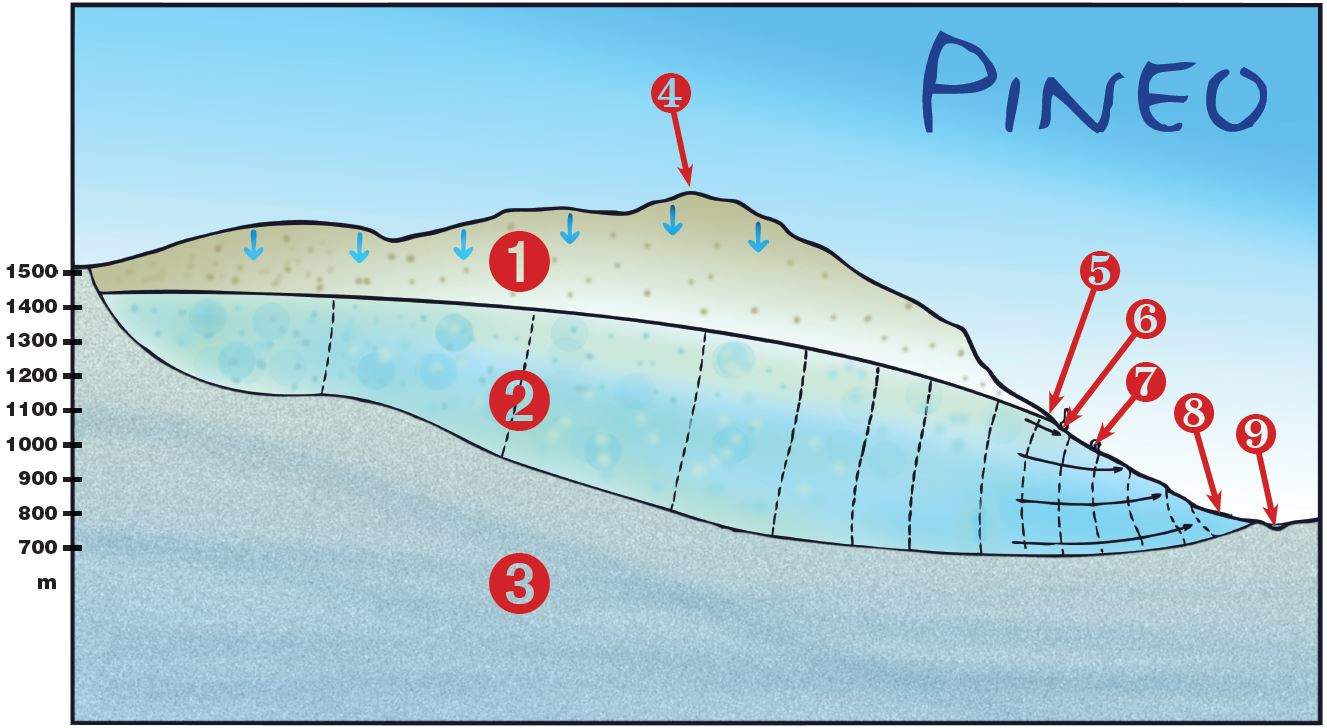
1. Water-permeable layer
2. Aquifer = layer saturated with water
3. Impermeable layer
4. The Benedió mountaintop
5. The ruing of the monastery, Monastir Sant Vicenç de Pinsent
6. Pineo sources
7. Pineo reservoirs
8. Pineo bottling plant
9. The El Segre River

